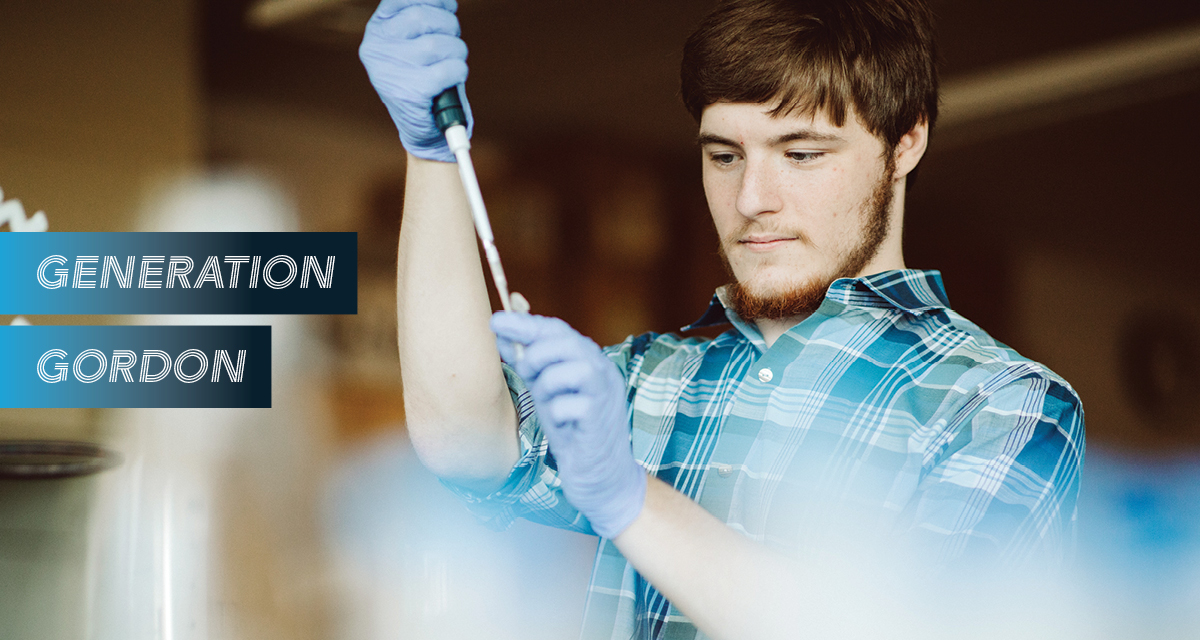The Macro Reason for Molecular Research
This article appears in the spring 2020 issue of STILLPOINT magazine: “Generation Gordon.”
Thirty years ago, the Human Genome Project launched. Over the following decade, with the involvement of 2,800 scientists from around the globe and a budget of three million dollars, it would sequence and map every gene that makes up the human DNA.
The Project produced what many have called the manual for the human body—a record of the physical and functional attributes of each of the tens of thousands of genes that make up the 23 chromosomes in DNA—which helps scientists better understand, diagnose and treat genetic diseases.
“Today we can sequence the human genome in less than a day,” says biochemistry major Nathan Gill ’20, “thanks to advancements in genome sequencing making it faster, more accessible, cheaper and more accurate.”
Last summer, Gill became part of a global effort to develop better, faster ways to sequence proteins. Proteins are built based on information encoded in DNA and perform a wide range of functions. But because their structures and components are much more complicated, there is not yet a simple way to sequence them.
Gill was selected for a highly competitive Summer Undergraduate Research Fellowship through the National Institute of Standards and Technology in Maryland. He spent 11 weeks last summer at the Institute for Bioscience and Biotechnology Research under the wing of two research scientists. Together they investigated one particular protein, ClpS, whose binding properties and behavior (how it interacts with other proteins) make it a good candidate for helping to advance protein identification and sequencing.
Commonly known as the “dietary benefit” in food like meats, beans and eggs, proteins also play a role in hormones, immune responses and muscle development. Sequencing them will make research easier, says Gill, whose work contributed to the development of a patent and publication. “A lot of biochemistry is focused on proteins, and being able to sequence a protein is a good step to understanding that protein’s possible function and biochemical properties.” And improving the ability to study proteins means increasing the opportunity to find answers to things like sleep disorders, autoimmune diseases and cancer.
Back at Gordon, Gill carries around a plastic blue replica of ClpS in his backpack. To the unknowing observer, it may look like an unwieldy string of confetti. But for Gill it’s a token of his hard work and a reminder of why he’s doing it.
Faith and science, he says, are a lot like the twisting helical structures found in DNA. “They’re not the exact same thing; they’re not two totally separate things. But they are winding around each other and connecting.”
After a previous church experience led Gill to believe he had to choose either science or faith, “I came to Gordon almost as a test,” he says, “to see whether the two could actually be integrated in a healthy way.”
“I was skeptical and worried,” he remembers. “I’ve met some of the best people I’ve ever known at Gordon. They both reaffirmed my love for science and biochemistry but also how faith can be integrated with that.” Like the two intertwining strands of a helix, he says, “faith and science cross over.”
 The Bell
The Bell